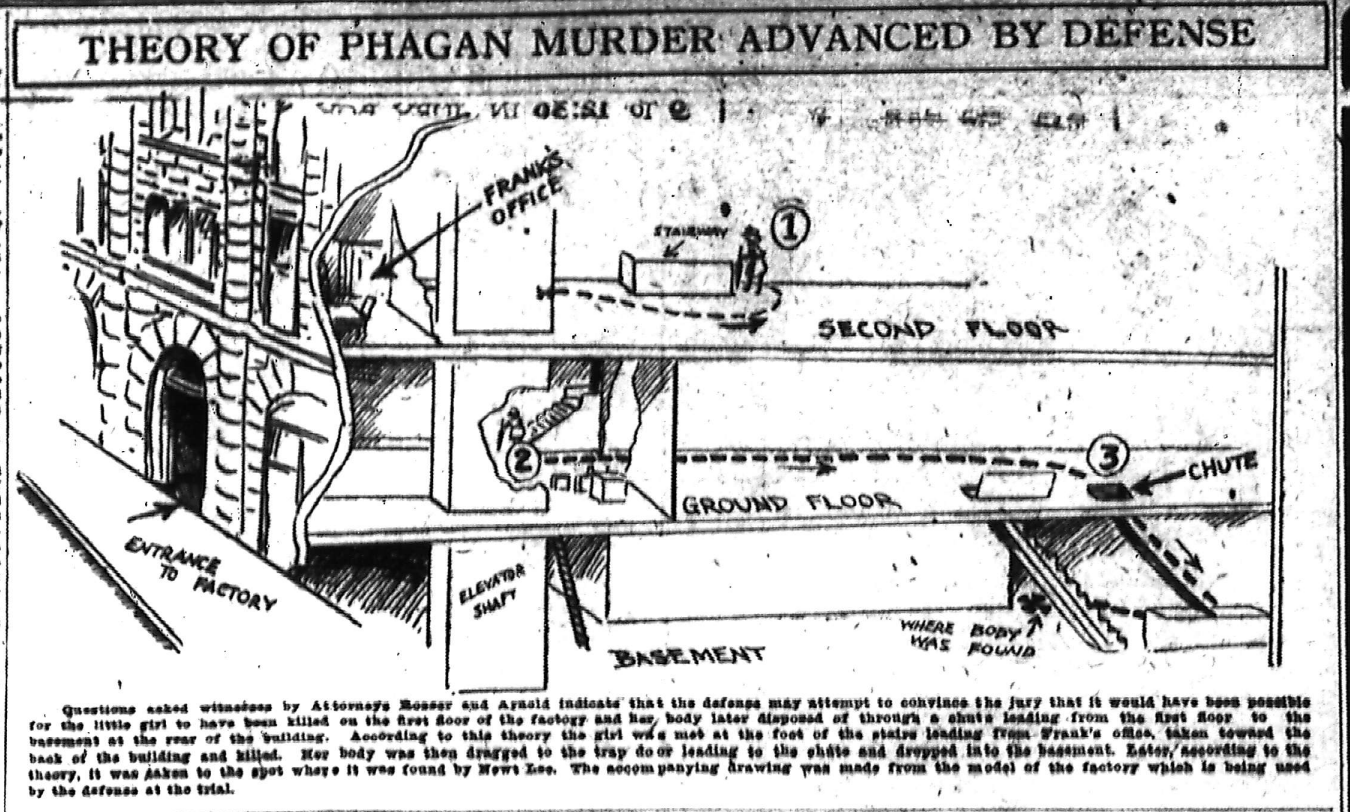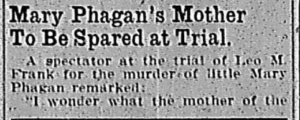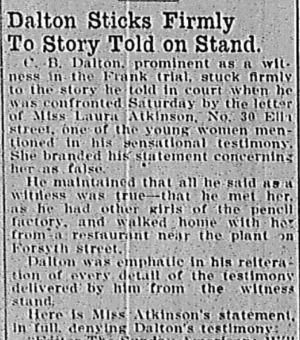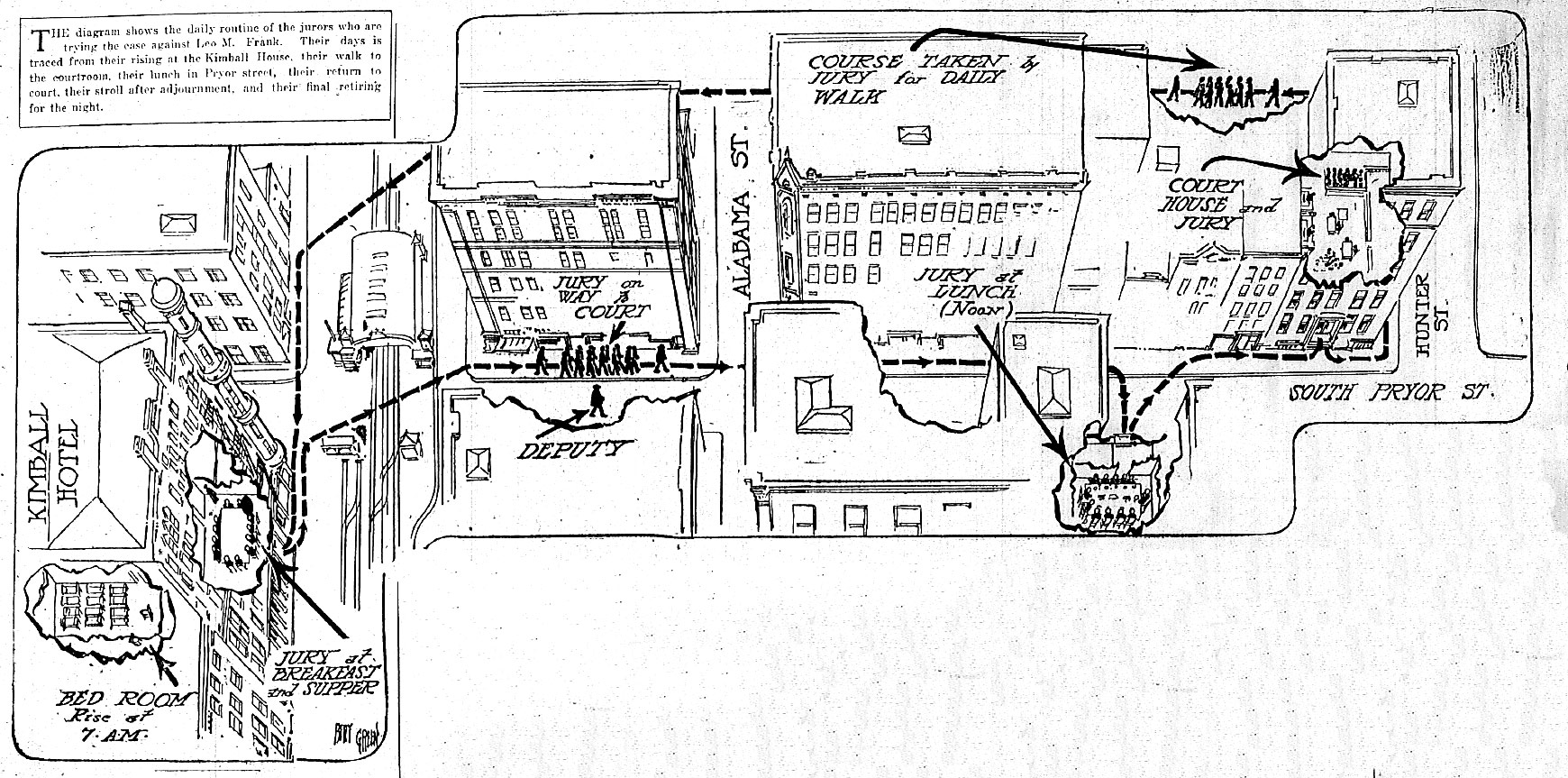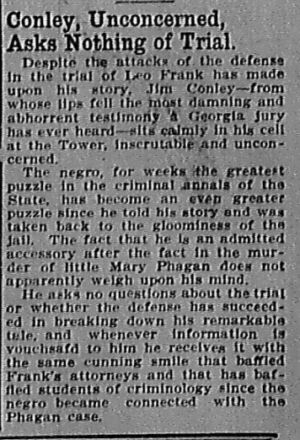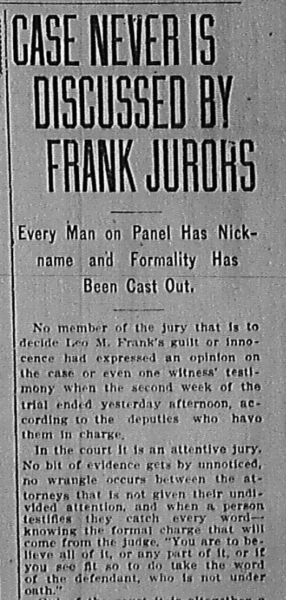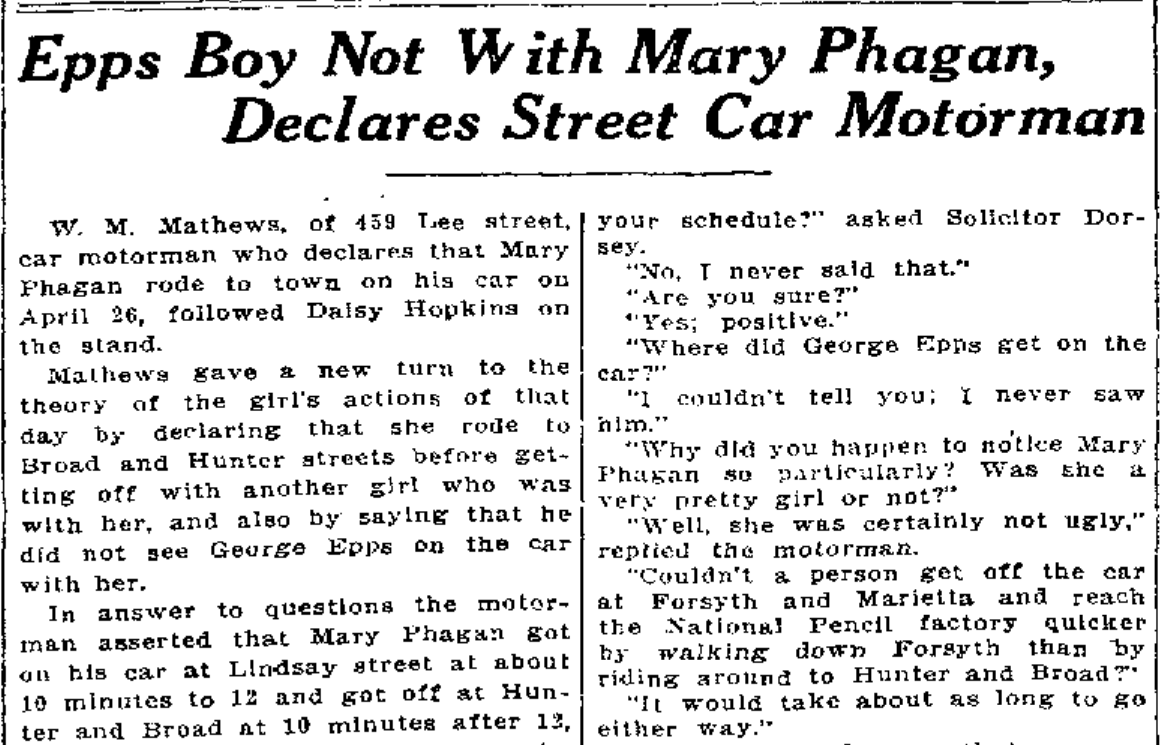Another in our series of new transcriptions of contemporary articles on the Leo Frank case.
Atlanta Constitution
August 10th, 1913
Saturday by Far the Best Day for the Defense Since Start of the Frank Trial Two Weeks Ago.
SAYS WOMEN DID NOT VISIT FRANK’S OFFICE
Lawyers for State and Defense in Frequent Clashes During the Testimony of Frank’s Assistant at the Factory.
By far the best day the defense in the Frank trial has had came to a close Saturday afternoon at 12:30 o’clock when a recess was taken until 9 o’clock Monday morning, at which time Herert Schiff, assistant to Leo M. Frank, will again be on the stand to undergo a thorough cross-examination at the hands of Solicitor Dorsey.
Schiff’s direct testimony Saturday was of a convincing nature and the defense will largely bank on it to disprove the idea that Frank could have committed the murder and afterward done the intricate mathematical work he claims to have done during the afternoon of Memorial day. Just how Schiff’s testimony will stand up under the cross fire of Solicitor Dorsey is a question which Monday alone will answer. Thus far his testimony has been the most convincing of any that has been introduced by the defense. He is an extremely bright young man, ready with his answers and he possesses a good memory. When court adjourned Saturday Solicitor Dorsey had failed to shake him on any material testimony or point.
Continue Reading →


